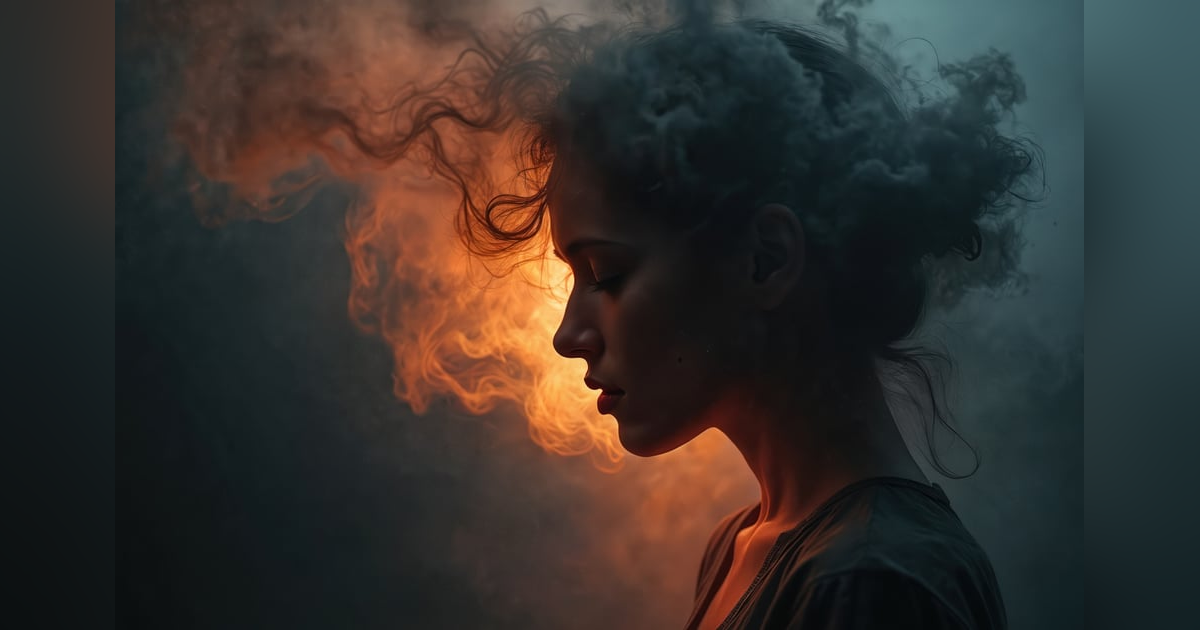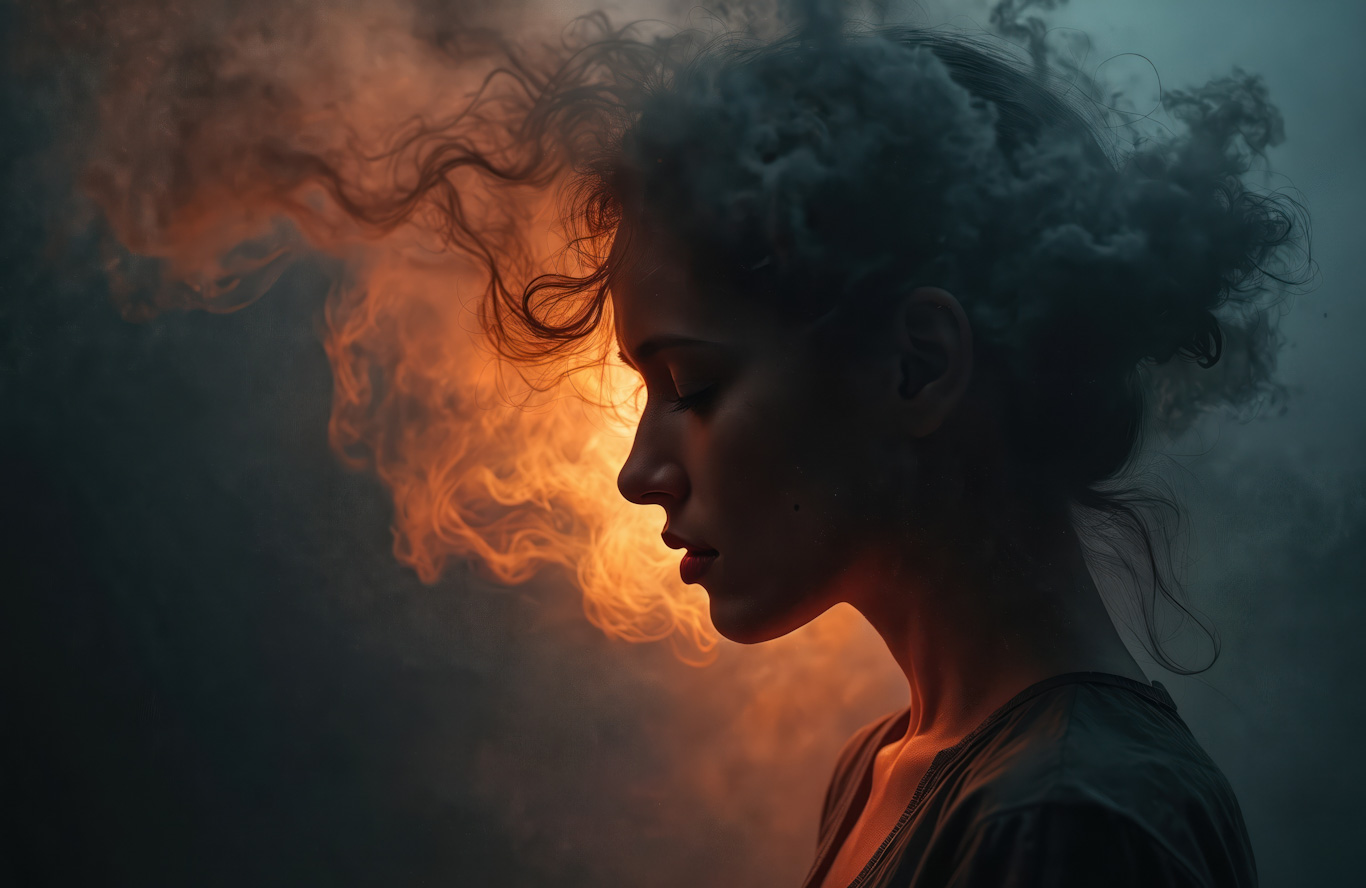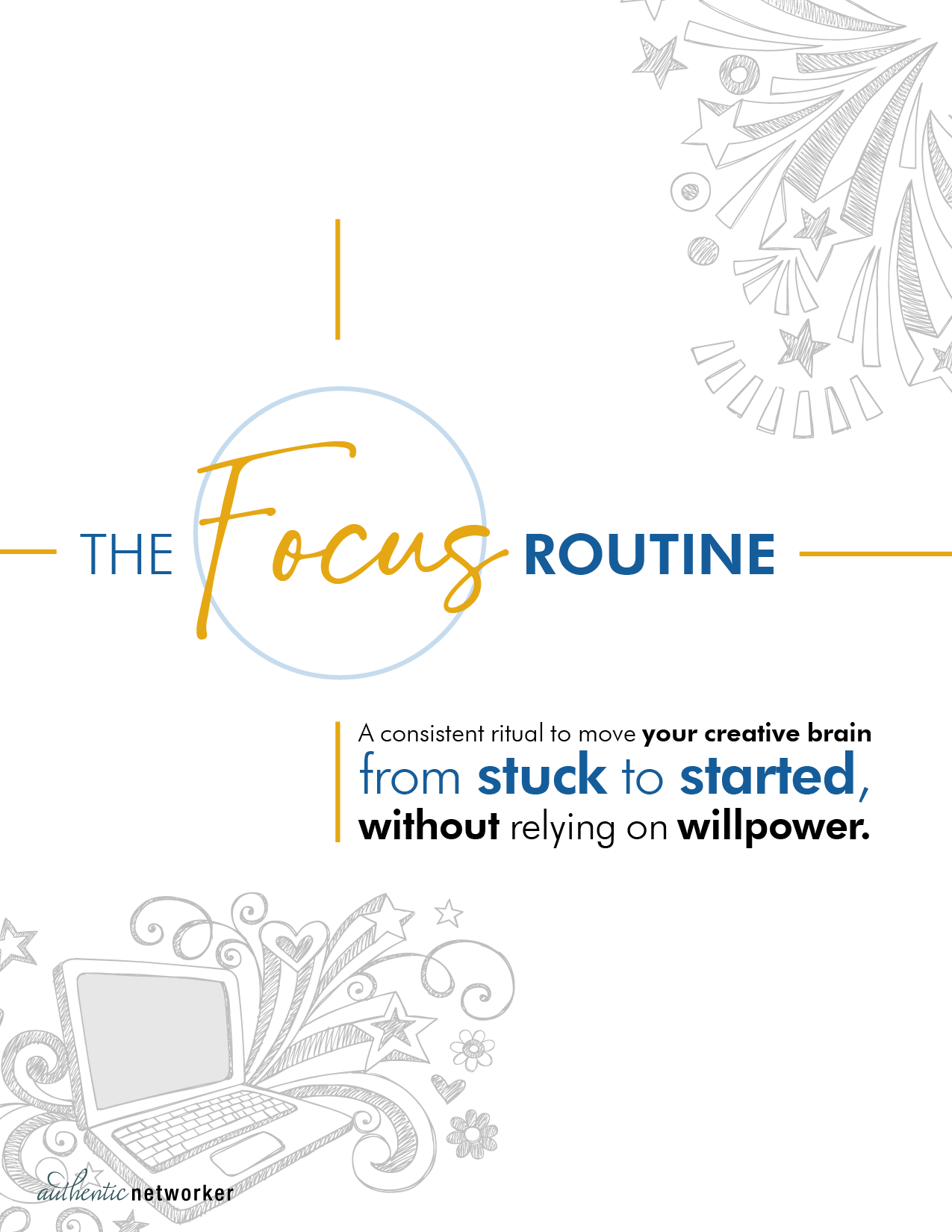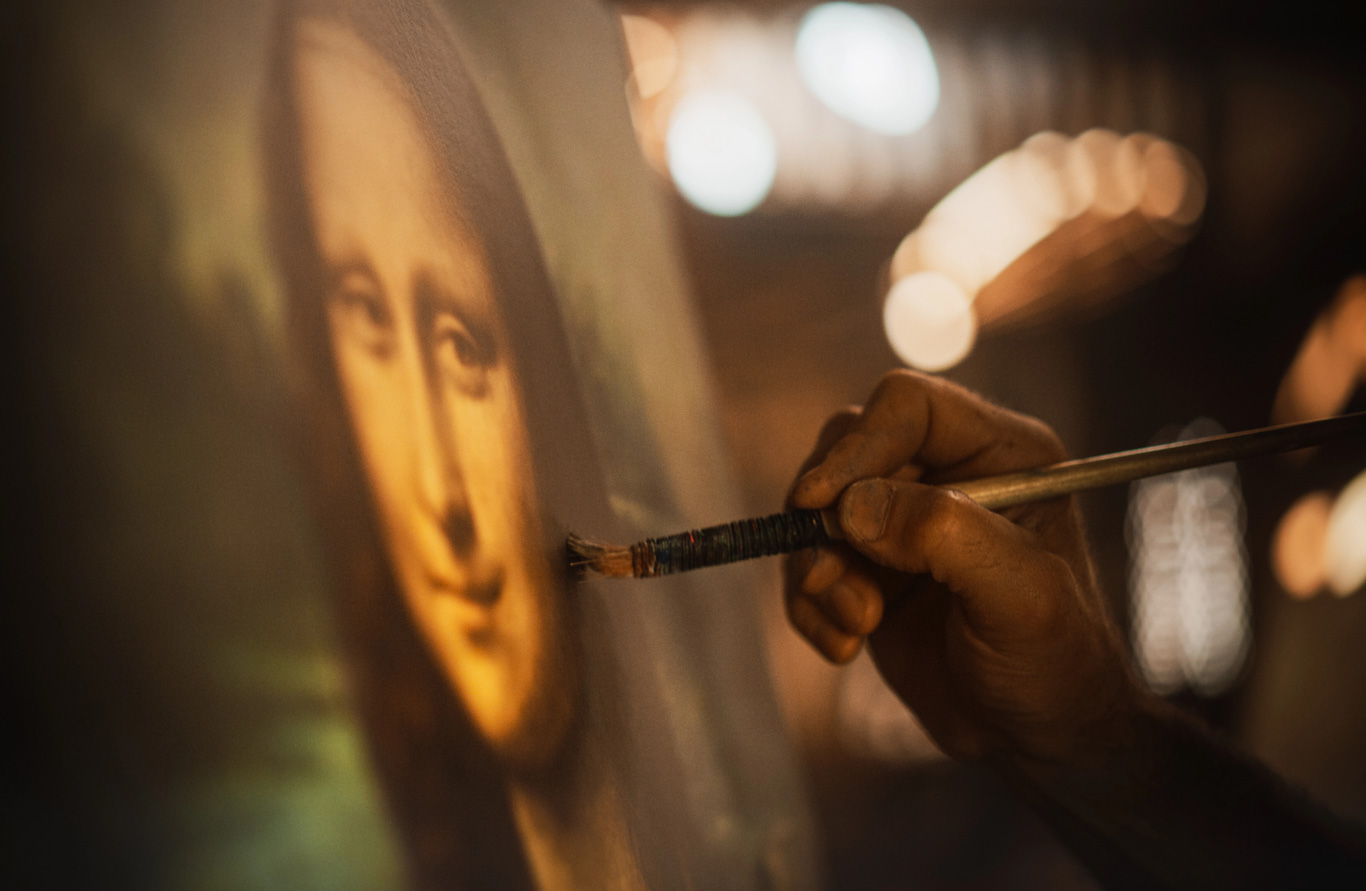Getting Started in the Storm: Creating Through Emotional Intensity


When you're raw, wrecked, or barely keeping up, creative work might be the last thing on your mind. But what if your most meaningful ideas are waiting in that mess? This episode explores the quiet power of creating mid-storm. Your voice might matter most when everything feels uncertain.
When you're raw, wrecked, or barely keeping up, creative work might be the last thing on your mind. But what if your most meaningful ideas are waiting in that mess? This episode explores the quiet power of creating mid-storm. Your voice might matter most when everything feels uncertain.
In this episode, Mia shares reflections from a deeply human chapter that reshaped how she sees creative work, emotional intensity, and the role of ritual in recovery. Alongside iconic creators and surprising research on how we think and make in the midst of chaos, this episode traces a quiet, brave path back to creative momentum.
So many of us wait for perfect conditions to start. The research, and our lived experiences, suggests that meaningful work actually begins in the middle of the mess. Whether you’re in the fog or just feeling disconnected from your creative spark, this is your permission to plant something anyway.
------------
🪜 The Focus Routine
If your to-do list feels like a wall, this is the ladder.
Download my free, super awesome ADHD-friendly Focus Routine and give your brain a starting ritual that works.
👉 authenticnetworker.com/focusroutine
------------
🌊 Wavelength
Do you ever get tired of all… this? (gesturing vaguely at everything)
Find a protected, positive space to do your best work with heart-centered people.
Join Wavelength, my virtual coworking community designed for neurodivergent solopreneurs and quietly brilliant creatives.
✨ Work gently, together.
👉 authenticnetworker.com/wavelength
------------
💬 and if this feels bigger to you than just a creativity block…
If something stirred while listening—if you felt a wave of emotion or recognized yourself in the storm—you are not alone.
Sometimes what looks like procrastination or creative block is actually something deeper asking for care.
If there’s a quiet voice inside you wondering if it’s time to reach out… please listen to it. That voice is wise. You are allowed to want support. You are worthy of feeling held.
Below are some trusted resources. You don’t have to explore them all right now. Just know they’re here. And if your next step is simply pausing and breathing, that counts too.
You’ve already begun. I’ve got you.
🛟 Mental Health & Crisis Support
International & Text-Based:
- Mental Health Resources Worldwide – CheckPoint
- Find A Helpline – Mental health support lines globally
- Crisis Text Line (US, UK, Canada, Ireland) — Text HOME to 741741 for free, 24/7 support
Canada:
- Wellness Together Canada — Immediate mental health support and counselling
- Talk Suicide Canada — 1-833-456-4566 or text 45645, 24/7
US:
- 988 Suicide & Crisis Lifeline — Call or text 988, 24/7
- NAMI HelpLine — 1-800-950-NAMI (6264)
Therapy & Peer Support:
- Open Path Collective — Affordable therapy directory
- Warm Line Directory (peer support)
------------
📚 Omg though. I want to research everything.
I got you.
🎨 Van Gogh’s Asylum Period
Van Gogh Museum – “Van Gogh in Saint-Rémy” The Starry Night was painted in June 1889 while van Gogh was at the Saint-Paul-de-Mausole asylum.
✨ Elizabeth Gilbert on Creativity Without Suffering
Gilbert, Elizabeth. Big Magic: Creative Living Beyond Fear (2015). Riverhead Books. ISBN: 978-1594634710 Quoted from Chapter 2: “Enchantment.”
🎤 Watch her iconic TED Talk: Your Elusive Creative Genius
🧠 Emotional Creativity Research
Amabile, T. M., Barsade, S. G., Mueller, J. S., & Staw, B. M. (2005). “Affect and Creativity at Work.” Administrative Science Quarterly , 50(3), 367–403.
This is the study that found a 40% increase in creativity on emotionally intense days.
🧬 How Emotion Shapes the Brain
Davidson, R. J., & Begley, S. (2012). The Emotional Life of Your Brain. Hudson Street Press. ISBN: 978-1594630897
Breaks down how your amygdala communicates with innovation centers in the brain. TLDR: Feeling things deeply may actually boost your creative edge.
------------
Episode Keywords: emotional creativity, creativity and mental health, creating during emotional overwhelm, procrastination support, how to stop procrastinating, how to get started when you're overwhelmed, writing through grief, art as healing, creative recovery, emotional intensity and productivity, focus during emotional chaos, how to create when life is hard, expressive writing, therapeutic creativity, the psychology of creativity, working through emotional fog, healing through creative practice, starting small when things feel big, inspiration on hard days, creativity in the storm, creative momentum, resilience and creative work, solopreneurs, coworking, focus routine
Mia Torr: What if your worst days held the key to your best work?
Today I'm sharing about Van Gogh, creative suffering, and how to turn your emotional chaos into creative gold.
3, 2, 1. Let's go. Welcome to Transition Space, your gateway from thinking to doing. I'm Mia Torr.
If you're called to create meaningful work, use this podcast as part of your starting ritual. Make your coffee and clear your desk while you listen, and we'll hang out as you ease into focused flow. While you create your space, I'll help you entertain the transition. Come on in.
Today on Transition Space, what it means to make something honest when everything feels like too much.
Vincent van Gogh is one of the most mythologized artists in history. He's known as much for his suffering as for his genius. But before the Starry Night became an icon, it began as one man's attempt to make sense of his inner chaos.
Picture Van Gogh confined to the Saint Paul de Mausole asylum, looking through iron bars up toward the night sky. He was struggling through what we'd now call a mental health crisis. He kept a regular painting rhythm, often moving fast and finishing paintings in a single session. His brushwork was charged with intensity as he painted. One day, in the middle of that routine, he channeled his turbulent emotional state into a painting the world never forget. The Starry Night.
Van Gogh didn't consider this a masterpiece. To him, it was just another night sky painted in the dark, from memory, with everything he had left. But in that single session, his internal storm transformed into swirling stars and cypress trees reaching like flames toward heaven.
This is one of the most iconic images we have of creative power, but it's also a portrait of anguish. And here's where we need to talk.
Because Van Gogh's story helped cement something: a myth that creativity requires suffering. That you have to bleed for your art or teeter on the edge of a breakdown to channel your best work.
One of my very favorite authors, Elizabeth Gilbert, pushes back hard on this idea. If you watch her TED Talk or read her book Big Magic, she'll tell you that while life always includes struggle, suffering is not some secret ingredient.
Creativity doesn't demand it. And in fact, creativity might be the very thing that gets us through it.
Decades of art and music therapy affirm what Elizabeth Gilbert is saying. You don't have to be suffering to make something meaningful. You can create from any emotional state, steady, stormy, or somewhere in between. And when you do, the act of creating becomes its own kind of healing. It was never our demons doing the creative work anyway.
But if not the demons, then what? What actually fuels creativity when everything feels like it's on fire?
That's the question a curious team of psychologists set out to answer. And so they decided to eavesdrop on a little bit of workplace drama.
Teresa Amabile, Sigal Barsadeh, Jennifer Mueller, and Barry Stah had one big question. Does emotional chaos help or hurt creativity?
They were studying creativity in motion. Ideas sparked in the middle of long days, tough conversations, and shifting deadlines. The kind of work that shows up right when your inbox is on fire. Your nerves are frayed. And Courtney from accounting has microwaved fish. Again.
So they followed over 200 employees in seven companies tracking emotions and creative output. Think of it like an emotional weather report and a creativity meter. Then they waited for news on whether any good ideas made it out alive.
In case you've been waiting to feel better before getting creative, take note of what our intrepid researchers found. Creativity surged on emotionally intense days. It didn't matter if those emotions were joyful or jagged. Participants were up to 40% more creative on the days they were fully in it, feeling big, raw, and real.
The spark of creativity came from deep, visceral presence. It came from the employees who were fully present in the moment, no matter whether they were feeling frustrated or overwhelmed or wildly inspired.
Which means you don't have to fix your life before you can make something meaningful. Maybe you've been waiting until you feel better to create inspired work, but you just need to feel what you're feeling and show up anyway. Even on the days the air smells like reheated salmon.
It's a thing! Okay. Where were we? I'm good. I'm good. Are you good? Here we go.
The science of emotional creativity says that when you create from an intense emotional state, your brain actually processes information differently.
The amygdala, your emotional center, connects more strongly with areas responsible for innovation and problem-solving.
So what can this research mean for us? For those of us who might be stuck in an emotional storm right now?
It means it's going to require a mindset shift away from thinking of our emotional chaos as an obstacle and trying to reimagine it as a doorway.
I've been here. I know this place. And I'm not going to pretend like it's an easy shift.
For me, it was like trying to write about joy while I was doodling about grief in the margins.
Sometimes life just hands you a chapter you didn't see coming. Mine lasted four years, and it hit me so hard emotionally that it took every tool and Every scrap of courage I had just to navigate it.
And in that time, I didn't feel drawn to create anything. I kept waiting for life to improve. First my voice started to become a whisper, and then a memory. And then something I had to rediscover entirely.
Creating anything uplifting felt impossible from that place. How do you inspire others when you can barely find your own feet?
But here's what emerged for me from that silence. I had to get radically honest about where I was standing and give myself a kind of gentle, brave permission to create from exactly that spot.
I started piecing together fragments of ideas from my writing. I gathered drafts I hadn't finished, sentences I'd scribbled in tears in the middle of the night, half formed ideas and morning journal entries that laid bare what I'd been feeling.
Every fragment I found drew out my pain like it was still sharp in my hands. But I reopened those pages. I reread my words, and I let myself return to them.
When I first touched those words, I flinched. The grief was physical. My heart was heavy. I had a hollow twist low in my belly and a lump in my throat that felt like it was barricading my voice. Even my fingers felt it. When I started to type, it was like they were waiting for permission to write. What? My voice couldn't speak.
But they typed. And something shifted into motion.
As my hands started moving, I felt my shoulders drop. The words came in a rush. They were messy and uneven. They were sad. They were angry.
And in typing those words, I felt a powerful tension between what I had been living and what I longed to live.
I opened that gate and I let the words move through, even when the sentences felt clumsy or too raw. And my ache started to change shape. It stretched into something more spacious. Each phrase carried a little more breath, a little more room, and it soon became clear to me that this process was working both ways. As I shaped the work, the work reshaped me.
Somewhere in that flood of language, I met myself again. I was reassembled in real time, raw and honest and feeling open.
I stayed with the process long enough to find something like hope. And I know I'm not the only one.
Some of the most deeply human works we know were shaped from exactly this place, when the artist was still mid storm.
Think of the art that's moved you most. It likely wasn't made in perfect conditions. Brene Brown, Billie Eilish Lin Manuel Miranda. Creators who shaped meaning from the messy middle. They built beauty before the clarity came. And they turned their storms into creative truths. They created from where they stood, and in doing so, they made it easier for the rest of us to begin.
This podcast exists because I needed to feel less alone when I was getting started. Wavelength, my virtual coworking community, grew from my needing a protected, positive space away from the noise and the negativity.
I created these things because I wanted somewhere I could work alongside good people who understood what I needed was a soft landing space. And my deepest hope is that it helps you in some way, too.
For me, hope took its time. It showed up in those fragments, like light catching the edge of broken glass. Each time I returned to my page, I'd gather another fragment. I wanted to hold up every piece and see them clearly, exactly as they were, because they hurt less from that perspective. They were still sharp, but less cutting. And ever slowly, those pieces began to shape, something I could finally stand on.
If you've been holding out for the moment when it all feels easier and your energy feels like it's been on back order for months, I promise you're still in this. And if life feels like a dumpster fire and you're driving the struggle bus in circles, pull over for a second. I see you. You're here. It counts.
And just in case what you're going through right now feels bigger than a creative block, if it feels too much to carry and too hard to share, please know this. This moment doesn't define you, but it might be asking you to reach. You are worthy of support that meets your full complexity. And you don't have to know exactly what you need to deserve that support. Not support that tries to shrink you or simplify you or tell you to come back when you're okay. Support that sees your voice as valid, exactly as you are, and exactly where you're standing. I've gathered a few trusted resources in our show. Notes, tools, crisis lines, therapists, and safe community spaces. They're here for you. Take what you need when you need it.
You're allowed to want agency, and you're allowed to reach for truth. This podcast is one small light, but you deserve a whole constellation.
So call upon your storm to fuel you. And as you rise in creative power, you might notice the storm shifts, the sky changes, and you're still here, but breathing easier with something solid beneath your feet. Your voice carries weight even now. Maybe especially now.
Whether you're making coffee or arranging your desk right now, give yourself that permission to create from exactly where you are, to speak from this moment, to let your current state inform your voice rather than silence it.
I'd love to hear how you create through emotional storms. Visit authenticnetworker.com/transitionspace and share with me what helps you keep creating when everything feels uncertain.
This is Transition Space, where you clear your path from thinking to doing. I'm Mia, and together we've shaped what's possible. Now it's your turn to make it real.



